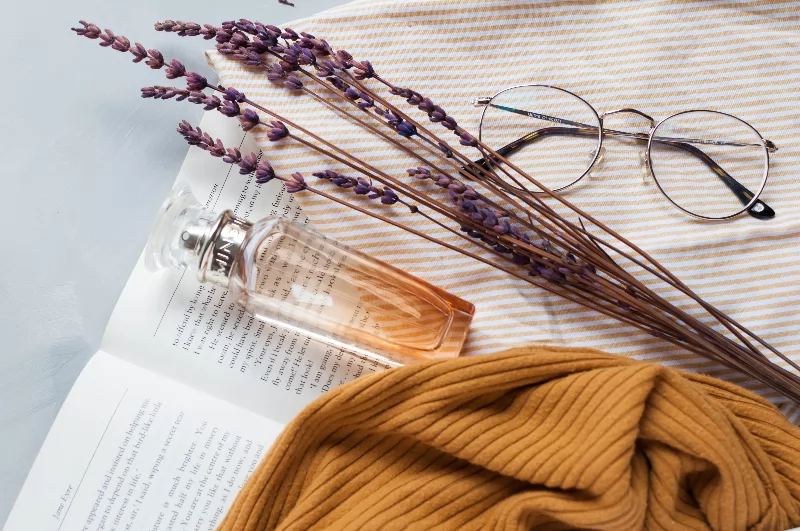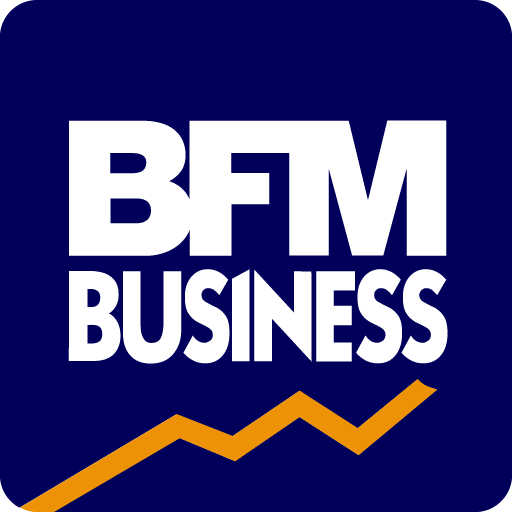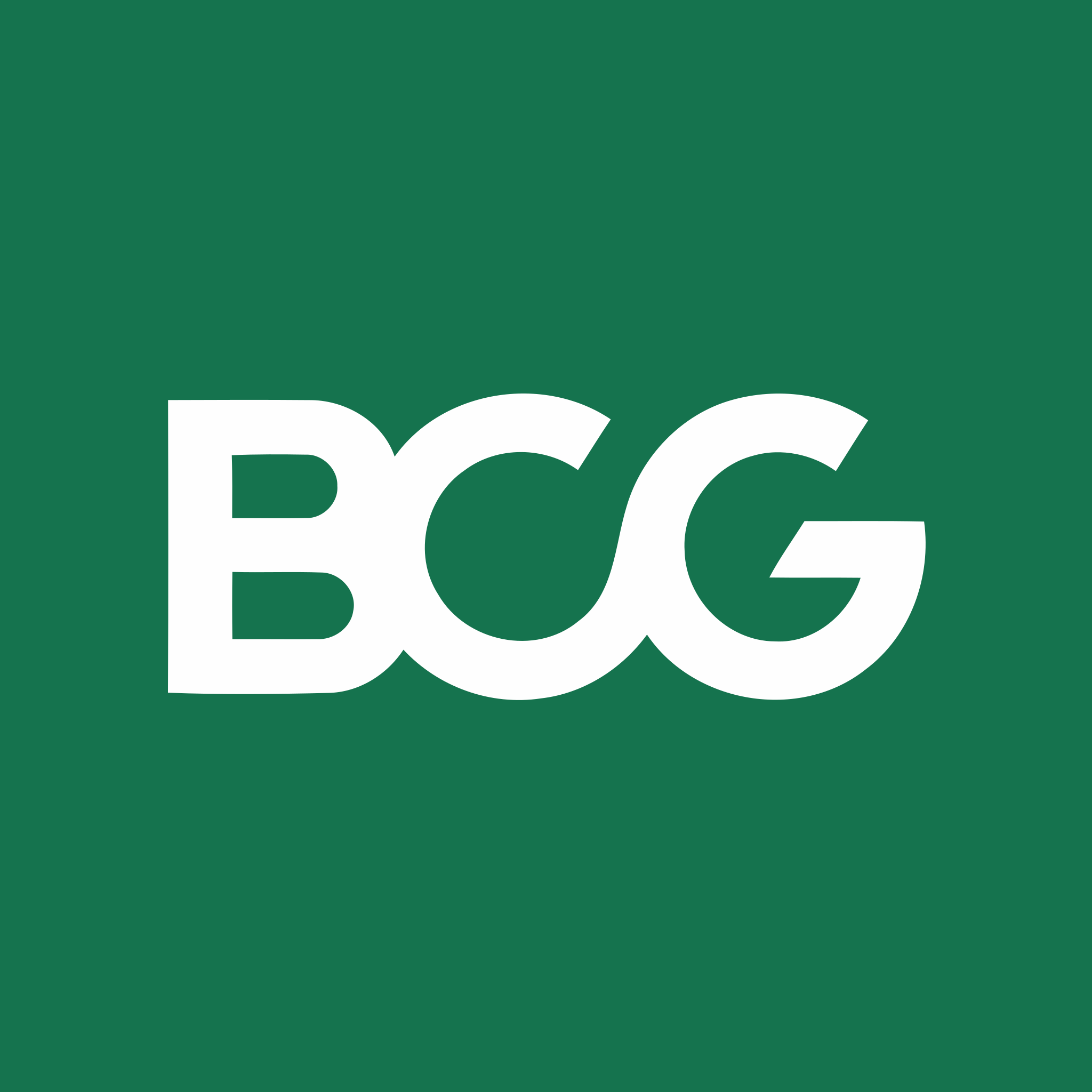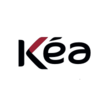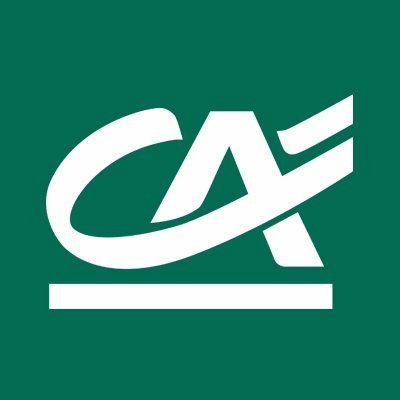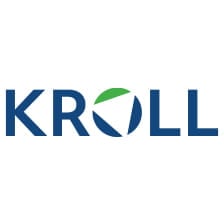Detailed content of our market study
 Inforamtion
Inforamtion
- Number of pages : 35 pages
- Format : Digital and PDF versions
- Last update :
 Summary and extracts
Summary and extracts
1 Market Overview
1.1 Definition and scope of the study
The perfume market refers to the market for scented liquid typically made from essential oils extracted from flowers and spices, used to give a pleasant smell to one's body. These are often alcohol-based.
Every year about 400 new patented perfumes are released into the global market, which is worth about $48.42 billion. Consumers are constantly looking for products belonging to this market, seeking out intoxicating fragrances even from Italy, which is the world's fifth largest market in the trade of these products. Perfumes represent the third highest purchase for the Italian household within the 'body care' sector (preceded by facial and body care products)
Until the COVID-19 pandemic and the economic environment it unleashed, this sector was booming in previous years (fluctuating between 2-3.5 percent year-on-year, 2.3 percent in 2019). The domestic market increased by 1.9 percent while the export market grew by nearly 3 percent. Despite regular price increases in perfumeries and large retail centers, this market continued to grow, making up about 20% of the Italian cosmetics sector. The year 2020 was the first year of market contraction in more than a decade with a 12.8 percent decline, with the domestic market contracting 9.8 percent and exports dropping 16.5 percent.
The perfume sector is markedly segmented in terms of sales with four main types of sellers:
- Perfumeries (individual perfumeries, local franchises and branded stores that sell other products but also perfumes) account for 75 percent of the market share
- Large retailers
- Parapharmacies
- Supermarkets, hypermarkets and other forms of distribution account for less than 1 percent
Production is unevenly distributed in a geographical sense, with more than 50 percent of production centers and companies in the northern region of Lombardy, followed by Emilia Romagna with about 10 percent and Veneto with nearly 8 percent. The north largely dominates the south in terms of production, with 3 southern regions not even ranked due to low production levels. Italy also hosts 7 annual free perfume exhibitions, which help spread new fragrances to the general public.
With the economic downturn of the pandemic, the perfume industry in Italy has seen a boost during the holiday season (such as Christmas), as perfumes tend to be popular and easy gifts.
1.2 The global perfume market
The global perfume market is growing rapidly, reaching a value of about $**.** billion in **** . The industry is expected to grow at a CAGR of *.* percent over the forecast period from **** to ****.
The fragrance industry is strongly driven by the growing popularity of different types of fragrances among millennials, as well as increasing investments in promoting fragrance brands on social media and the growing number of players in the industry. In addition, innovations in perfume packaging design and fragrance represent crucial market trends that stimulate awareness about product launches among customers. The emergence of unisex fragrances is expected to add value to the market.[***]
Global fragrance market World, ****-****, US$ billion Expert Market Research
Focusing on product analysis, premium fragrances are expected to dominate the market over the forecast period; this is given by the growing popularity of premium fragrances among young people, who view the product as unique and having an innovative fragrance. Premium fragrance brands are favored by consumers with larger budgets, which has helped expand market share. In addition, the use of fragrances helps improve personal style, presentability, and , for some, even has the ability to influence people's moods.[***]
1.3 The Italian domestic market
The Italian cosmetics market has been estimated at **.* billion euros in ****, growing by *.*% compared to ****; this sector, being constantly growing, represents a significant part of Made in Italy production. In line with the global trend, the perfume and fragrance market accounts for **.* percent of the turnover of the Italian cosmetics market, representing the third largest family of personal care consumption in Italy.
As with the cosmetics market, the fragrance sector has confirmed steady growth, registering a percentage increase of **.*% in **** . The only downturn during the forecast period occurs in ****, during the Covid-** pandemic, where a strong negative impact on this market is expected, as evidenced by the **.*% drop in market sales.
Overview of the Italian perfumery market Italy, ****-****, € million Cosmetics Italy
1.4 Exports and imports
The Italian cosmetics market depends largely on exports: its trend has been growing for more than a decade, and although this slowed down slightly in ****, and then recorded a significant drop in **** (***) has been noted since ****. The positive numerics, in light of the sector's responsiveness, represent characteristics of resilience, investment and innovation, constant factors that have characterized the activities of Italian companies in the face of a market that, accomplice to the pandemic, has shown profound changes both in the composition of the products used and in the important dynamics especially in distribution models.
Exports, Imports and Coverage Rate; Perfumes and Eau de Toilette Italy, ****-****, US$ UNComtrade
This positive export trend is interesting if we note that, for the first time, the first country of destination for Italian supply is the United States, a market characterized by a rapidly changing demand, representing **.* percent of the total. This is followed by Germany (***).
Percentage breakdown of exports among the top * consumer countries (***) Italy, ****, % UNComtrade
As for imports, the top supplier country of the product is France (***).
Percentage distribution of imports among the top * supplier countries (***) Italy, ****, % UNComtrade
1.5 The impact of Covid-19 on the perfume market
The pandemic has had a major impact on the cosmetics market and the perfume and fragrance industry in particular, on the one hand causing several difficulties and major losses, but also accelerating transformations and changes that were taking place before ****.
The Italian cosmetics market shrank by *.* percent, the total turnover of companies related to the market was **.* billion, down nearly ** percent from the previous year. In line with this trend, exports and imports also suffered large losses. Exports in **** totaled *.* billion, down **.* percent from *.* million in ****.
All sales channels recorded negative values in their channels, a change of -**%; excepte-commerce, which increased by **.*% in the first half of ****. Considering the whole of ****, e-commerce grew by **%, while traditional distribution channels recorded a contraction of **.*%.
The perfume and fragrance market has experienced great difficulties being a specialized industry: the restriction measures put in place by the Italian government in March caused consumption to drop by ** percent. The combination of a lack of liquidity and the prolonged closures that have taken place in Italy have deeply affected the specialized industries, and the numbers from this period will have a lasting impact on future values.
At the same time, although the data appear to be ...
1.6 The impact of the Russian-Ukrainian conflict
The outbreak of the Russian-Ukrainian conflict in February **** led to a general increase in the consumer price index in various economic sectors. With regard to the perfume sector, we analyze the broader item-present in the ISTAT database-including Personal hygiene and wellness articles, which does not appear to be exempt from this increase. Through the analysis of the price index for the above items, an increase of *.* percent between January **** and August **** can be shown.
Consumer price index for personal hygiene and wellness items Italy, ****-****, base ****=*** Istat
The increase in consumer prices is nothing but a reflection of the increase in producer prices. Between January **** and August ****, the producer price index for perfume and cosmetics manufacturing increased by **.* percent.
Producer prices of industry - manufacture of perfumes and cosmetics Italy, ****-****, base ****=*** Istat
2 Demand analysis
2.1 Demand characteristics
Turnover generated in traditional and digital channels
The following is an overview of perfumery turnover in recent years; in **** the value of turnover is *.* million euros, down from ****(***). A percentage change of *.*% is expected in **** . **** **** **** Var. % '**/'** Var. % '**/'** Var. % '**/'** Var. % '**/'** Perfumery sales *.*** *.*** *.*** **,*% -*,*% **,*% *,*%
According to estimates provided by Istat databases, the monthly spending of Italian households on personal care has seen a significant decrease from **** to ****. In fact, a percentage decline of **.* percent is estimated. As for ****, the value taken into account belongs to the Expenditure Item (***) precisely because it includes a breadth of products in addition to perfumes.
Average monthly household spending on personal care products Italy, ****-****, € Istat
Spending on women's toilet waters, perfumes and extracts(***).
Percentage breakdown by category (***) Italy, ****, % Cosmetics Italy
2.2 Factors influencing demand
Perfumes are considered by many to be luxury and sophisticated items and, as such, are often chosen as gifts for special occasions. This determines attests to a strong seasonality of the market, which increases in size during the holidays. The market is certainly influenced by the growing propensity to seek out useful personal care products, making perfume an elegant and, at times, not too personal gift.
The graph below represents the average proportion of searches in a given given given word (***). Thus, a value of ** means that the keyword was used less often in the region concerned, and a value of * means that there is not enough data for this keyword. Looking at the value for the last year, we can see that the peak in search value is recorded around December '**, supporting the thesis that this market is highly seasonal.
Evolution of internet search by keyword "perfume" Italy, ****-****, Google Trends index Google Trends
2.3 Geographical distribution of demand
To visualize the geographic distribution of demand, a map was created with monthly household spending on personal care items and products by Italian macro-region, which is assumed to be in line with monthly household spending for the perfume subgroup.
The north presents the highest figure, with **.** €/month, in the center the expenditure is **.** €/month while, in the south, households spend an average of only **.** €/month on personal care items and products.
2.4 New demand trends
Trends in the fragrance market for **** revolve around the pursuit of sustainability, innovation, and individual expression. Key trends that need to be taken into account in this industry are:
environmental sustainability and health awareness: the fragrance industry in **** is characterized by an increasing focus on environmental sustainability and health. Consumers are becoming increasingly aware of the environmental impact of the products they buy, thus, increasing the demand for natural and organic fragrances. In addition, there is a search for synthetic fragrances free of toxic chemicals.[***] solid perfumes: known for their smart and sustainable packaging, this type of fragrance is becoming more sought-after on a daily basis. it is a trend expected to continue to grow, reaching major milestones in the coming years, so much so that the global market for this product The global market for solid perfume is expected to increase significantly between **** and ****.[***] variety of trends and fragrances: today there are a variety of fascinating trends available in the world of perfumes; whether it is sustainable perfumes, revisited florals, or vintage fragrances, the offerings present particular products for all consumers.[***] men's fragrance trends: in the fall-winter season of ****/****, men's perfumes will see the release of new products featuring fragrances ...
3 Market structure
3.1 Market structure and dynamics
The perfume and fragrance market represents a fascinating sector deeply rooted in the tradition and culture of many societies. Perfumes are an essential element of personal toiletry for men and women, which is why consumers have a constant demand for them. Manufacturers range from historic and luxurious brands to newcomers seeking to capture consumers' attention with unique olfactory compositions and eye-catching packaging. Indeed, one of the key features of the industry is continuous innovation, resulting in the development of new fragrances and distribution technologies that enhance the consumer experience.
Analyzing the value of companies active in fragrance and cosmetics manufacturing shows that, with the exception of ****, there has been a steady increase in activity. From **** to **** there was a growth of *.** percent, only to mark a slight decline in ****(***). From **** to **** , growth was significant at **.*%.
Firms active in the manufacture of perfumes and cosmetics Italy, ****-****, number of units Istat
By employees we mean the value of employees and independents of active enterprises; regarding this figure, we can see that there has been a steady growth in the number of hires, leading to a slight reduction in **** (***) of *.**%.
Number of employees active enterprises in perfume and cosmetics manufacturing Italy, ****-****, thousands ...
3.2 Value Chain
The value chain in the fragrance market, involves several stages starting from fragrance development and production to retail and final consumption.
Research and development: at this stage the fragrance is created by perfumers, which will be tested to ensure that quality and safety standards are met. Procurement ofraw materials: the purchase of ingredients such as essential oils, alcohol and other components is essential for fragrance production. Manufacturing andblending: at this stage, the manufacturing and packaging of the product is carried out; at the manufacturing stage, the mixing of the incredients is witnessed according to the formula provided for the creation of the perfume, while at the packaging stage, the perfume is bottled and made available for sale. Distribution: perfumes are, then, distributed to retailers (***)
Determining aspects in the sale of the product are also:
Marketing andsales: advertising and marketing campaigns help in the promotion of new perfumes, going on to build the brand. After-sales service: customer support for any product-related problems or questions is necessary to make sure that a relationship of trust is established between seller and buyer.
The fragrance value chain is summarized in the table below.
3.3 Distribution channels
After perfumes are compounded and encapsulated, they are distributed through multiple distribution channels and sold to consumers. The main distribution channels for perfume markets are as follows: perfumeries, mass retailers, and parapharmacies. Supermarkets also play a role in product distribution, but they account for less than * percent of total sales.
Perfumeries
At the end of ****, the perfumery distribution channel had a strong increase of more than ** percentage points, reaching a value close to *.* million. In the post-Covid era, the return relative to the average number of annual launches of new perfumes (***).
Breakdown of online purchases in some retailers in the perfumery channel in **** Italy, ****-**** comparison, % Cosmetics Italy
Parapharmacies and GDO Corners
Certainly, the perfumery channel represents the most flourishing distribution mode for this market; analyzing the composition of perfume sales in parapharmacies and GDO corners, we can see that the values are essentially low, being *.* percent of total sales for the former and *.* percent for the latter.
Composition of perfume sales in Parapharmacies and GDO Corners Italy, ****, % Cosmetics Italy
3.4 Main market players
Leading fragrance companies represent a combination of tradition, innovation and mastery in the art of perfumery. Many of these companies have a history that begins centuries ago and, to this day, continue to set olfactory trends globally, enchanting consumers with unique and memorable fragrances. Prominent names include historic houses such as L'Oreal or Euroitalia, but younger companies and niche brands are also gradually emerging with innovative proposals, often geared toward sustainability and production ethics. The perfumery industry represents a dynamic melting pot of creativity and craftsmanship excellence, where the ancient craft of perfumery blends with the most advanced technologies in the creation of unforgettable olfactory experiences. With an ever-growing global market, competition among perfume manufacturers is intense; below are some of the leading perfume manufacturers in the national context, considering them from a turnover perspective.
Euroitalia s.r.l.: is an Italian company specializing in the luxury beauty sector, with a history dating back to ****. Dedicated to the creation and global distribution of beauty products, including fragrances and cosmetics, for its own and licensed brands, the company values craftsmanship and innovation, ensuring a strong international presence, with products distributed in *** countries. The company places great emphasis on sustainability, both economic and ...
4 Supply analysis
4.1 Production and classification of perfumes
Production
Once the raw materials are obtained, the perfume is produced by observing steps:
The perfumer mixes different essences (***) to create what is called a perfume base; This perfumed base is diluted in alcohol depending on the concentration chosen for the type of article (***). Distilled water is also added; This mixture is then allowed to macerate for an average of ** days to stabilize the perfume; The perfume is frozen to solidify waxes and other residues, which are then filtered out.
[***]
Classification
Perfumes differ according to their constituent products, which are characterized by different amounts of fragrance, alcohol, and oils. Fragrance concentration indicates how strong the fragrance used is: the higher it is, the more fragrance oils were used in the manufacturing process.
Fragrance concentration determines the different categories of fragrance, which include:
Parfum: has the highest concentration of fragrance, between ** and ** percent, which is why it is also called "parfum." it is characterized by a higher price and lasts longer on the skin due to its stronger composition. Eau de parfum: It has a fragrance concentration between ** and ** percent, making it the second strongest type of perfume. Its alcohol concentration is higher and it is milder than a pure parfum. ...
4.2 Fragrance composition
A perfume can be broken down and analyzed according to what is called the "olfactory pyramid, " which has three levels.[***] Main notes: the smells that can be smelled immediately after spraying the perfume, but also those that fade faster. These are often the freshest and greenest notes, such as bergamot or citrus. Middle notes: the smells that characterize the perfume, the ones that give it its identity. They are often floral (***), fruity or spicy scents. Base notes: the odors that last the longest and those that structure and fix the scent. They are often woody or coppery notes, such as musk, amber, and vanilla. Olfactory families In total, there are seven different olfactory families. They can be used for female, male or unisex fragrances: Hesperid: bergamot, lemon, tangerine; Floral: jasmine, rose, lily of the valley, tuberose, narcissus; Fern: green or lavender notes, oakmoss; Cyprus: patchouli, cistus labdanum ; Woody: sandalwood, patchouli, vegetal, cedar; Oriental amber; Copper. Main Ingredients Perfumes are composed of both natural and synthetic essences , and both types are needed to create a scent. For example, aldehydes, which give the powdery scent of the famous Chanel No. *, are totally synthetic notes but are very common in perfumes to enhance and ...
4.3 Prices of perfumes and fragrances
The table below provides an overview of the prices per *** ml of the best-selling perfumes in Italy. The fragrances belong to the premium segment and the average price is about *** €.[***]
4.4 New supply trends
In a time of uncertainty and continuous economic crises, consumers' yearning for psychological well-being intensifies. This shift also shapes the beauty industry, where greater escapism is sought both aesthetically and internally. Timely technological advances will profoundly shape expectations toward products and services through the introduction of new categories and trends. In an environment marked by inflation and possible economic downturns, some product categories may see a temporary erosion of their perceptual relevance; in the face of rising costs of living, an emphasis on communicating values intrinsic to products and brands, coupled with wise pricing strategies, will prove crucial in the coming years.[***]
Several interesting trends were attested to for ****, covering a wide range of olfactory preferences and reflecting a trend toward diversification in the perfumery industry, with an emphasis on creativity and personal well-being.
Men's fragrances: the **** offering includes the adoption of woody and floral notes, creating warm and enveloping fragrances, characterized on an emphasis on scents such as sandalwood, cedar and oud. Despite the traditional association of these fragrances with men's perfumes, there has been a growing production of genderless perfumes, which transcend traditional gender divisions. These scents also incorporate floral notes, such as rose, and gourmand notes, such as ...
5 Regulations
5.1 The production of perfume: Regulation (EC) No.1223/2009
Pursuant to Law **/**/****, No. ***, Art. **; Legislative Decree **/**/****, No. ** - Regulation (***) No.****/****, Art. **; Ministerial Decree */*/****; Legislative Decree **/**/****, No. ***.
"The production of alcohol-based toiletries, soaps and perfumes requires that the notification of cosmetic products intended for sale on the EU market be submitted exclusively electronically through the centralized system called Cosmetic Product Notification Portal (***) is required. Note: This is a craft business if the conditions set forth in Law No. ***/** and Regional Law No. */**** are met." [***]
The Cosmetic Regulations is one of the main regulatory texts at the European level for the cosmetics market. Under EU Regulation To proceed with perfume production, the following steps must be followed.
Designation of a responsible person
For each product placed on the market, companies must designate a Responsible Person (***). The Responsible Person can be the manufacturer, the importer if the manufacturer is outside the EU, the distributor or a third person established in the EU. This Responsible Person will be both the point of contact for the authorities and the guarantor of the safety and compliance of the product
Product composition
Regulations establish a list of prohibited, restricted or permitted ingredients
Prohibited substances in the majority the cMR substances (***). Restricted substances ***, which can be used ...
6 Positioning of players
6.1 Segmentation
- Salvatore Ferragamo
- Giorgio Armani
- Bulgari
- Acqua di Parma
- Sephora
- Gucci
- Givaudan
- Gianni Versace
- Dolce & Gabbana
- Interparfums
All our studies are available online in PDF format
Take a look at an example of our research on another market!
 Choosing this study means :
Choosing this study means :
Access to more than 35 hours of work
Our studies are the result of over 35 hours of research and analysis. Using our studies allows you to devote more time and added value to your projects.
Benefit from 6 years' experience and over 1,500 industry reports already produced
Our expertise enables us to produce comprehensive studies in all sectors, including niche and emerging markets.
Our know-how and methodology enable us to produce reports that offer unique value for money.
Access to several thousand articles and paid-for data
Businesscoot has access to all the paid economic press as well as exclusive databases to carry out its market research (over 30,000 articles and private sources).
To enhance our research, our analysts also use web indicators (semrush, trends, etc.) to identify market trends and company strategies. (Consult our paying sources)
Guaranteed support after your purchase
A team dedicated to after-sales service, to guarantee you a high level of satisfaction. +44 238 097 0676
A digital format designed for our users
Not only do you have access to a PDF, but also to a digital version designed for our customers. This version gives you access to sources, data in Excel format and graphics. The content of the study can therefore be easily retrieved and adapted for your specific needs.
 Our offers :
Our offers :
the perfume and fragrance market | Italy
- What are the figures on the size and growth of the market?
- What is driving the growth of the market and its evolution?
- What is the positioning of companies in the value chain?
- Data from several dozen databases
5 reports pack (-15%) IT Italy
- 5 reports at €75.6 excluding VAT per study to choose from our Italian catalogue for 12 months
- Save 15% on additional studies purchased
- Choose to be refunded any unused credit at the end of the 12-month period (duration of the pack)
See the terms and conditions of the pack and the refund of unused credit.
